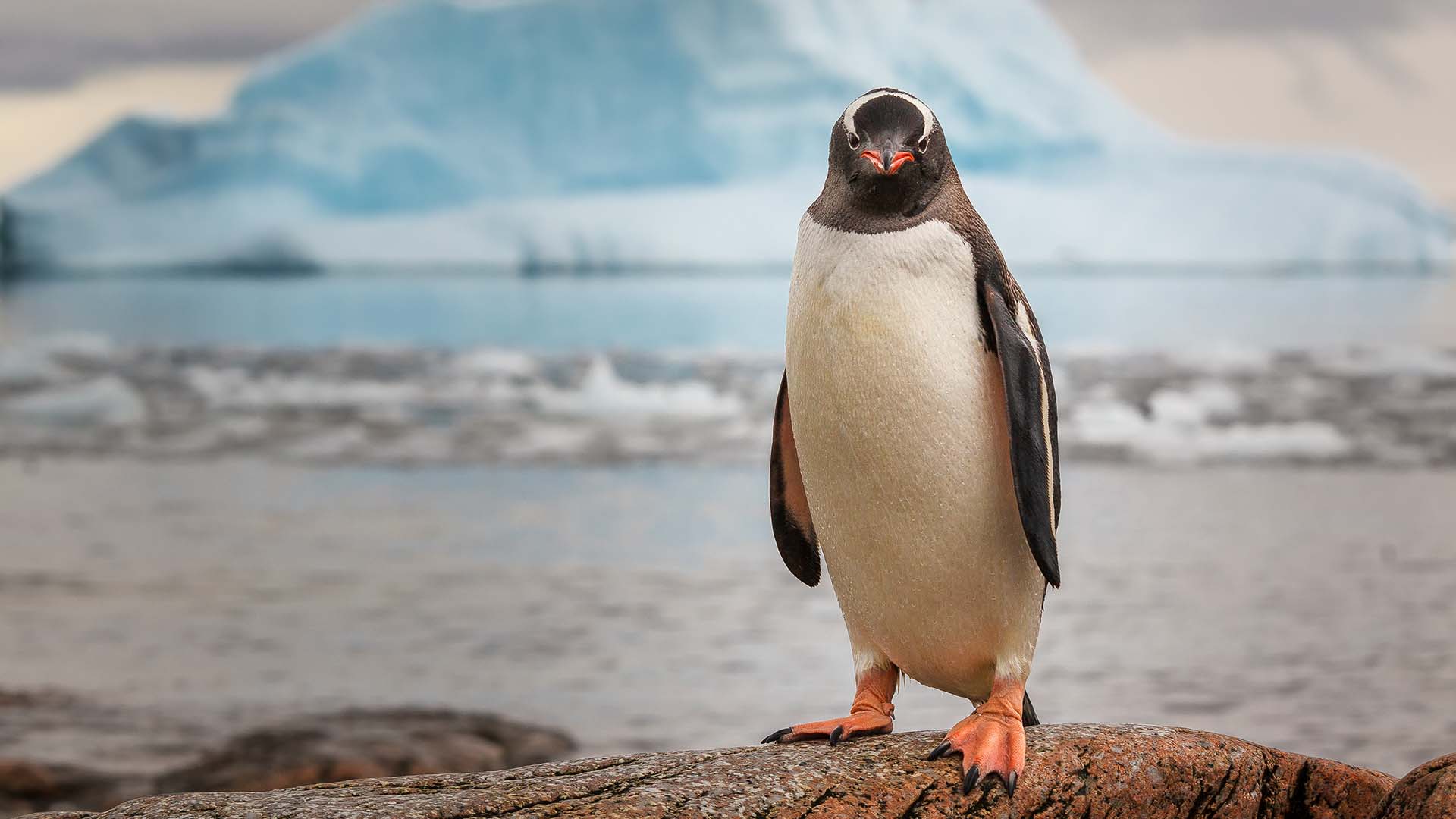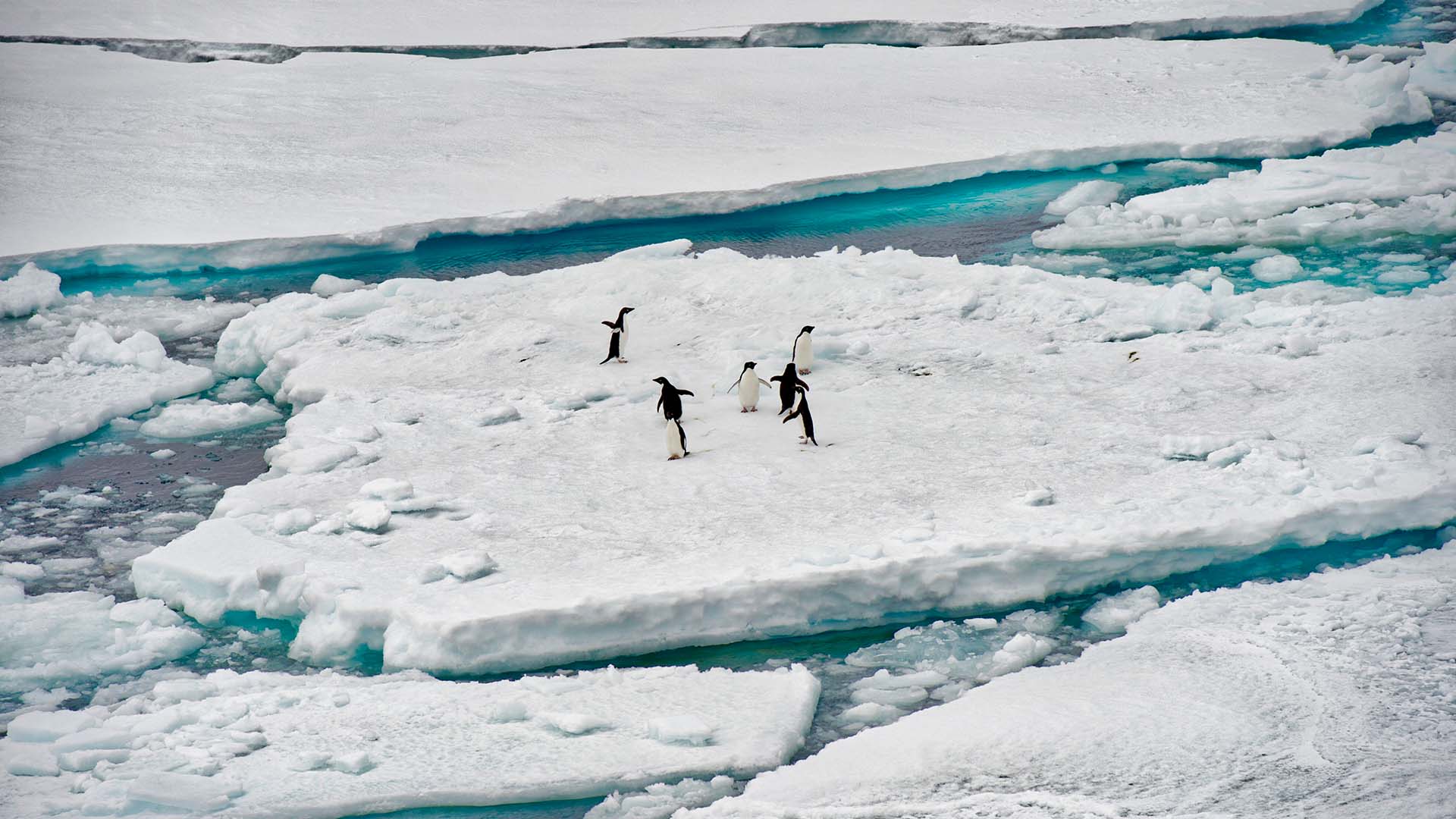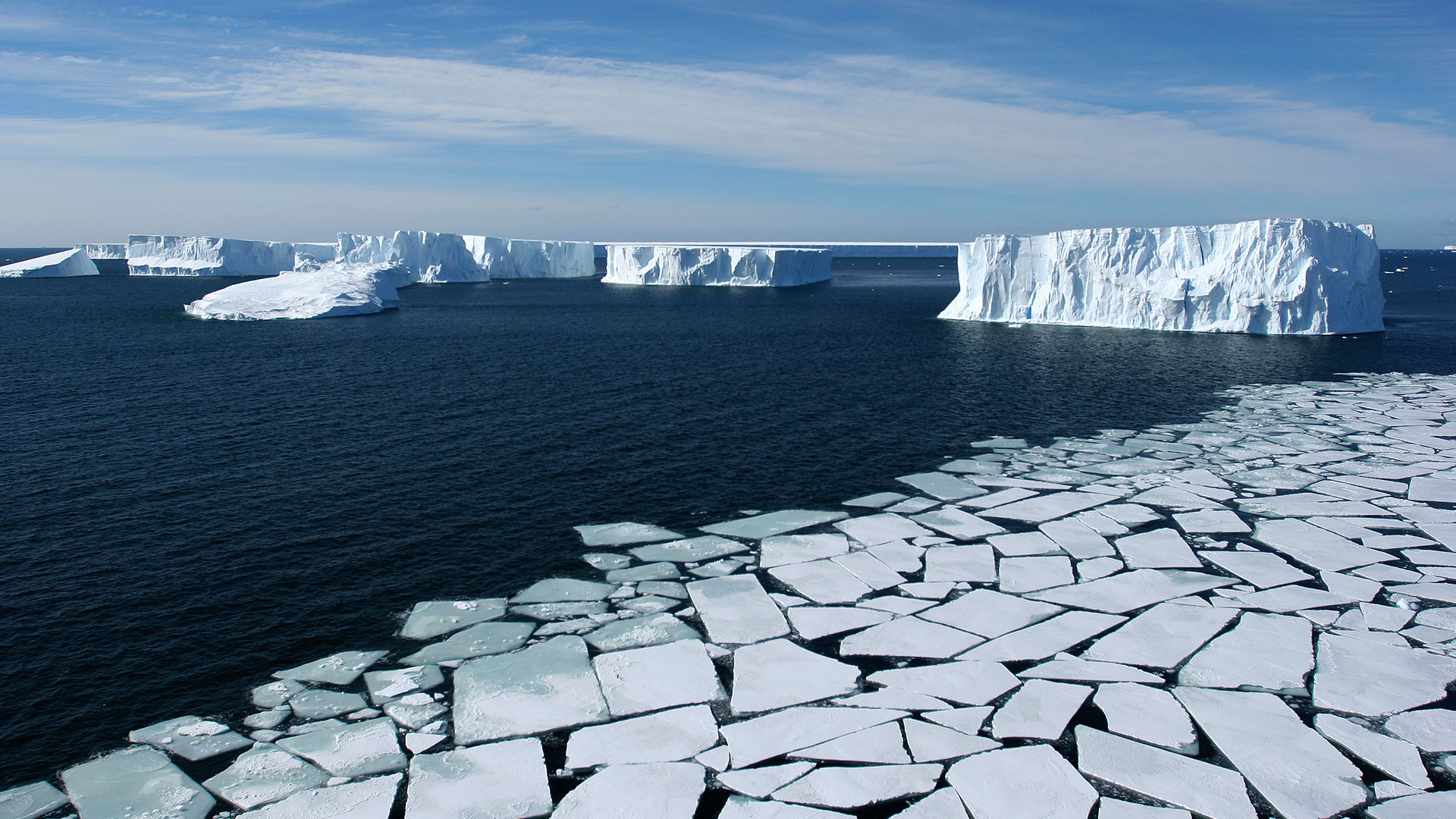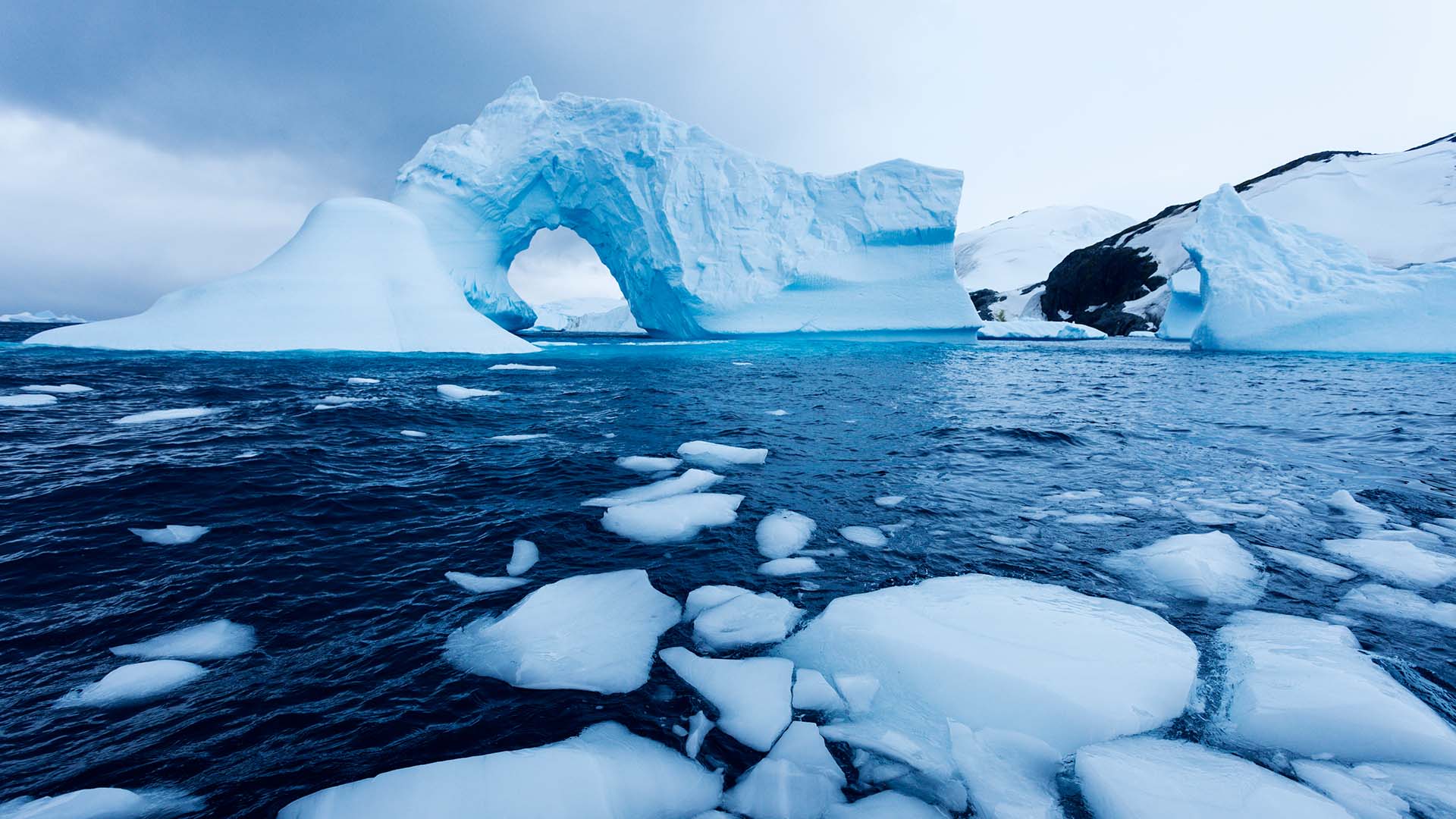BBC Earth newsletter
BBC Earth delivered direct to your inbox
Sign up to receive news, updates and exclusives from BBC Earth and related content from BBC Studios by email.
Climate change
Our frozen planet is melting – and changes in Antarctica are potentially both disastrous and far-reaching.
If the Thwaites ice shelf melts and slips into the ocean, it will raise global sea levels, hitting coastal communities around the globe.
Antarctica is larger than Europe and Australia, with more than 99% of the land permanently covered in ice, measuring almost 5km at its thickest point. While this vast inhospitable wilderness may be hard to relate to, it’s never been more important to understand this frozen part of the world. As the devastating effects of human-caused climate breakdown are being experienced like never before, it can be easy to forget what is happening in the Antarctic – and the impact that has on our planet.
Tina van de Flierdt, from Imperial College London, is one of many scientists who battle harsh conditions to understand this enigmatic continent. “Antarctica is the largest potential source and most uncertain contributor to sea level rise,” she says. In fact, the Antarctic Ice Sheet holds more than 90% of all surface freshwater. If it all melted, the global sea level would rise by 57m,1 drowning the world’s coasts.
Geological records show that Antarctica was not always covered by ice, however. There was little or none on the continent 100 million years ago when it was roamed by dinosaurs. Consequently, the global sea level was several tens of metres higher than it is today. This scenario is not one that we will be facing any time soon, which is possibly why some people turn a blind eye to the climate change that is happening now.

You may have heard headlines about the ‘Doomsday Glacier’, the name coined for the Thwaites Glacier, in 2017. “If we lose the Thwaites Glacier completely, this alone will raise global sea level by 65 cm,” says Claus-Dieter Hillenbrand, a marine geologist from the British Antarctica Survey. “Crucially, this may trigger a collapse of the remaining West Antarctic Ice Sheet, which would raise sea level by an additional 2.7 to 4.6 m.”
Robert Larter, a long-serving scientist from the British Antarctic Survey, is concerned that the name ‘Doomsday Glacier’ could give the misleading impression that our fate is already sealed. “‘Doomism’ can cause people to think there is no point in trying to mitigate climate change,” he warns. That said, the Thwaites and Pine Island Glaciers in West Antarctica are losing ice faster than at any time in the past 5,000 years.2 “They account for most of the current ice loss from Antarctica,” he says.

Contrary to the impression the ‘Doomsday’ name gives, sea level rise is a gradual process, occurring over centuries rather than in a day. It will also not be felt equally around the globe. “Large ice sheets exert a gravitational attraction on the ocean, similar to the gravitational attraction of the Moon and Sun that causes tides,” explains Larter. This means the sea level will rise more in places further from the ice sheets.
If sea levels rise as predicted, 150 million people could be displaced from coastal areas by the year 2050. And by 2070, cities including Miami, New York, Shanghai, and Mumbai will be at risk of serious flooding. The latest IPCC report3 suggests a rise of over a metre by 2100, which would submerge many parts of central London and low-lying countries such as the Netherlands. For many islands in the Asia-Pacific region – which are also sinking due to subsidence – this will feel more like a 2m rise.
But according to UN predictions, the impact will be felt long before then in places like Bangladesh, where 3.5 million people are thought to be at risk from flooding. It says that the current rate of global warming means 17% of the population will need to be relocated in the next decade.

We are all linked to Antarctica through Earth’s interconnected atmospheric and ocean systems. Antarctica’s ice sheets control the southern hemisphere winds that drive the current circling the continent – known as the Antarctic Circumpolar Current – which, in turn, is connected to all of Earth’s major oceans. In the same way that the Gulf Stream keeps the UK relatively warm, the Antarctic Circumpolar Current keeps Antarctica cool.
Any changes to the Antarctic Circumpolar Current impacts our entire global climate system, having far-reaching effects on regional climates and weather. On top of this, the size of the ice sheet is reduced when the ice melts, causing feedback loops – effectively vicious circles that accelerate warming and melting.
Our actions are transforming this ecosystem and the impact is being felt far beyond Antarctica’s shores. While scientists continue their research into the future of the world’s last great frozen wilderness – and how it will affect us – it is important to reassess our own effect on nature…and maybe change the way we view the continent.

“The most important thing is not to think of Antarctica as just a piece of land or ice, but as a living, breathing being who deserves to be treated with integrity and respect,” says Danii Kehler, a First Nations indigenous artist who visited Antarctica on a 2041 ClimateForce expedition. “When I was there, her fragility helped me realise that we all must reconnect with each other, the land and ecosystems, for our survival.”
“We need to shift our mindsets for the future; instead of thinking in the short term, we must start acting with integrity,” she says, reminding us of the indigenous principle of thinking seven generations in advance. “If Antarctica goes, then we will all go; it is our shared due diligence to ensure that never happens.”
It’s important for us to realise how every action we take affects Antarctica and each other. Though we may find it hard to relate to this continent, it plays a crucial role in our lives. Understanding and respecting it will help us as we move into an uncertain future.
Feature image by © David Merron Photography
This article was published on Friday 21st October.
References:
1. A 57m rise, 2. The glaciers are losing ice faster than at any time in the past 5,000 years, 3. IPCC report,